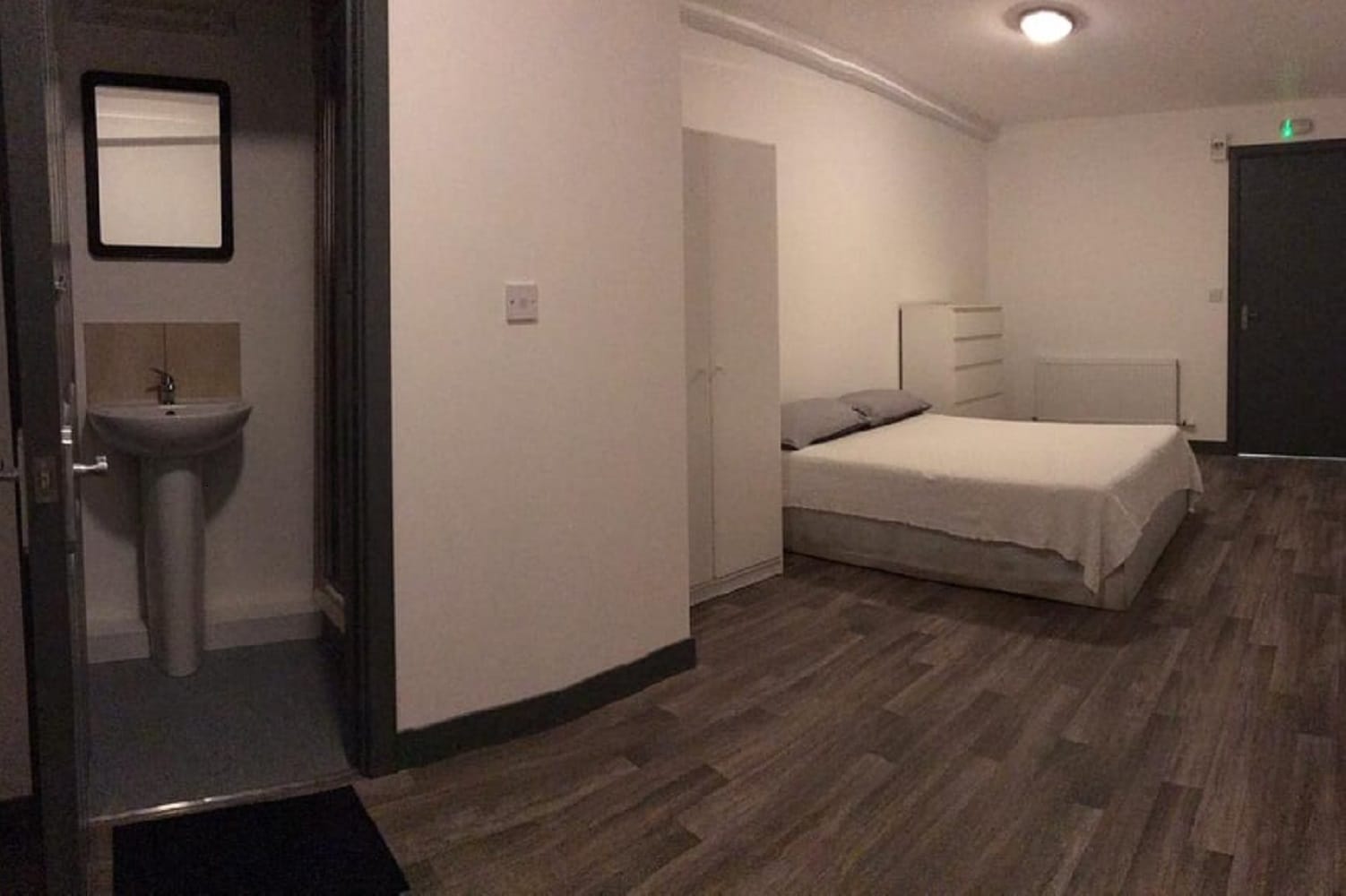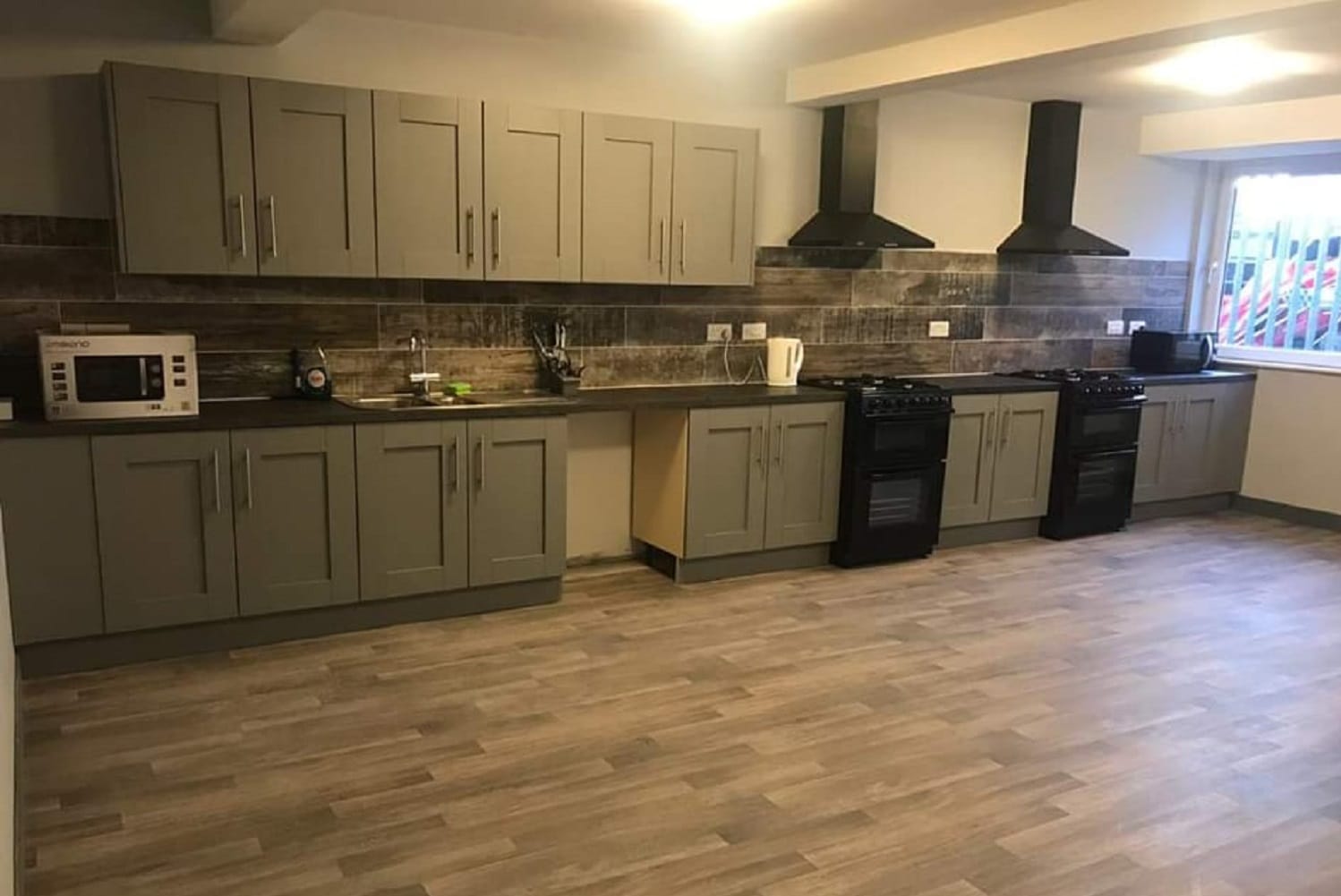What’s the best way to tell area residents about plans for a new asylum shelter nearby?
The government should tell communities directly about plans for new asylum shelters, some activists and politicians say.
Overcrowding has long been an issue in Dublin’s housing sector, which has been bursting at the seams for years now – but Covid-19 has put a sharper edge on it.

At 4pm last Thursday on Slaney Road in Glasnevin, cars trail through an unusually quiet Dublin Industrial Estate, most veering towards the DIY store Woodie’s or onwards to the Lidl supermarket.
Outside one of the blocks, directly in front of Woodie’s car park, two men haul a chest of drawers from a two-storey warehouse and into the side of a rented GoVan.
Until recently, the building was home to 42 students, mostly from Brazil, says Layanne Naves, who lived there from November 2019 until the beginning of this month.
They were split between 20 bedrooms over two floors, and shared a large kitchen with two stoves and two sinks.
A bed there cost between €95 weekly for a bunk-bed in a four-person room, to €250 weekly for a “couple room with bathroom”, according to an advert on Facebook in late January.
At first it was okay because it was just six to eight people in the whole building, says Naves.
“There was plenty of space for everyone,” she says. Naves paid €250 a week in cash to share a private room with her partner.
That changed though, Naves says. “After, it started to get crowded. It was a nightmare to live there because we had to queue to cook, to wash the dishes and everything. It was really messy,” she says.
Finding space in the kitchen with 42 people sharing the two stoves and sinks was stressful, says Nevas. “I had many nights where I went to bed without dinner.”
Overcrowding has long been an issue in Dublin’s housing sector, which has been bursting at the seams for years now.
Even in normal times, critics have said that squeezing people into tiny shared spaces means they can’t live with dignity, and stay healthy, mentally and physically.
But the arrival of Covid-19 has put a sharper edge on the problem of overcrowding, which the people living on Slaney Road were struggling with. And on the issue of precarity of tenure, which they also faced – as they’ve just been turfed out at short notice by the building managers.
All 42 people who lived there have now been moved out, says Renato Passos, a hairdresser, who said he managed Unit C at 131 Slaney Road.
What prompted this evacuation of furniture and people last week is in dispute.
Those renting out the building point to concerns about overcrowding and Covid-19, and others point to how they were looking to switch and rent instead to Dublin City Council for emergency accommodation.
“My biggest concern was that so many people [were] living together. I don’t want to be responsible for that,” says Passos.
Residents had started to leave because of Covid-19 concerns, making it difficult for him to meet the rent, he says.
It was accommodation “where people can stay one month, two month something like that”, says Passos.


Passos described a man called Joe Somerville as the owner of the property, somebody Passos had approached to find a place to rent out to those he knew were looking.
“I asked him did he have any properties as I know a lot of students were looking for a nice place to stay,” says Passos.
On the phone, Joe Somerville said he wouldn’t answer any questions about the Slaney Road property, but that he wasn’t the owner.
The students have been moved to two of his properties, where they are living rent-free, Somerville said. He declined to go into any details about these properties.
At one stage, it looked as if Dublin City Council was going to rent the building for emergency accommodation for those who are homeless.
“Dublin City Council got initial contact from this crowd that are running the accommodation,” says independent Councillor Cieran Perry.
The council was interested, Perry says. But then ran up against some issues. “The council realised that they didn’t have planning permission and it looked like the students hadn’t been given proper termination notices,” says Perry.
Last Friday, a spokesperson for Dublin City Council had said it was “finalising an agreement” to lease the property short-term. It would be used as emergency accommodation during the Covid-19 crisis, they said.
“The lease will be subject to the owner providing vacant possession of the premises,” said the spokesperson. “We are not aware of any difficulty in relation to previous residents.”
On Saturday, though, that had changed. “Dublin City Council has withdrawn its interest in this property,” said the spokesperson, by email. “We will not be pursuing it.”
The council withdrew its interest “once it became clear that there was a question mark about people who were previously residing there”, said the spokesperson.
Those moved out of Slaney Road are now scattered across the city.
Vans moved everyone en masse to different locations around the city to properties managed by the same person that managed Slaney Road, says Naves.
On WhatsApp, Ana Maria Santos, a former resident of Slaney Road, said she has been moved to Dublin 6. She is sharing a room with three others, she says. (And has yet to be offered a lease.)
The move was stressful because of Covid-19 fears, she says. “I got upset because I didn’t want to go through moving at this moment and expose myself to more risks.”

There’s also the continued challenge of staying safe and healthy and following all the rules about social distancing, while living in overcrowded conditions.
She’s very worried, she says. “But every house here is small due to overcrowding and therefore social distancing is a bit tricky.”
Passos, who managed the Slaney Road property, says that one of the new places has seven people in four bedrooms, and another has 12 or 13 people in five bedrooms. He’s not sure about the third, he says.
It’s very difficult to take public health protocols seriously when there are so many people living in a shared space, Santos says.
Others seem more sanguine. “We, like most Brazilians, don’t panic, so life is keeping going,” said one resident standing outside Slaney Road, last Thursday. “Things are going on as normal. Nobody is sick.”
Are people changing their habits? “Well,” he said, “you know we have to walk, we have to cook.”
And social distancing? Not so much, he said.
The HSE Press Office hasn’t responded yet to queries as to whether it has issued particular guidance for those in overcrowded conditions.
The Department of Housing said it was a matter for the Department of Health, who also have yet to respond to queries.
On 9 March, the housing charity Threshold wrote to the minister for housing, minister for health and the HSE’s Health Protection Surveillance Centre about overcrowding.
Threshold wanted to ask them to take it on board as an issue in the spread of Covid-19, says Gavin Elliott, a legal officer there.
Threshold pointed to the WHO’s housing and health guidelines published in 2018, and studies on respiratory diseases and overcrowding, he says.
“Certainly, there was evidence that reducing overcrowding would reduce the risk of infectious respiratory disease,” he says.
By flagging this, they “didn’t want to tell people who had no option that they are in terrible danger,” says Elliott. “We wanted to raise the issue but without telling people who have nowhere else to go that they are in danger where they are.”
In years past, there have been flare-ups of public attention to the issue of overcrowding in homes. But there still isn’t a huge amount of information in relation to overcrowding in Ireland, says Elliott.
“So we don’t really have sight, and the government doesn’t really have much sight as to the extent of the issue or where the issue is occurring and that sort of thing,” he says.
Past talk of a bill on how to handle and define overcrowding stumbled, particularly, over definitions, he said.
Trying to pin down a definition raises all kinds of issues around cultural appropriateness of definitions, stages of life, and what exactly any legislation should try to solve.
“Are we talking about dignity, or are we talking about disease control, and if we’re talking about dignity how do you define that? What is actually the problem with that that we’re trying to solve?” he says.
It becomes hard to define in feet and inches, Elliott says. That said, “it’s a difficult policy conversation but certainly not one that is beyond the realm of human intelligence to solve”.
Long-term, it would still be best if Oireachtas committees sat down and teased out and debated these issues around overcrowding, called in experts, and came up with a proposal and laws that way, he says.
Get our latest headlines in one of them, and recommendations for things to do in Dublin in the other.